A transition cup can be a great solution. Going from a bottle to a cup doesnt mean that you need to stop giving your child breast milk or formula Fisher saysyou can give them both in a sippy cup or cup with a straw.
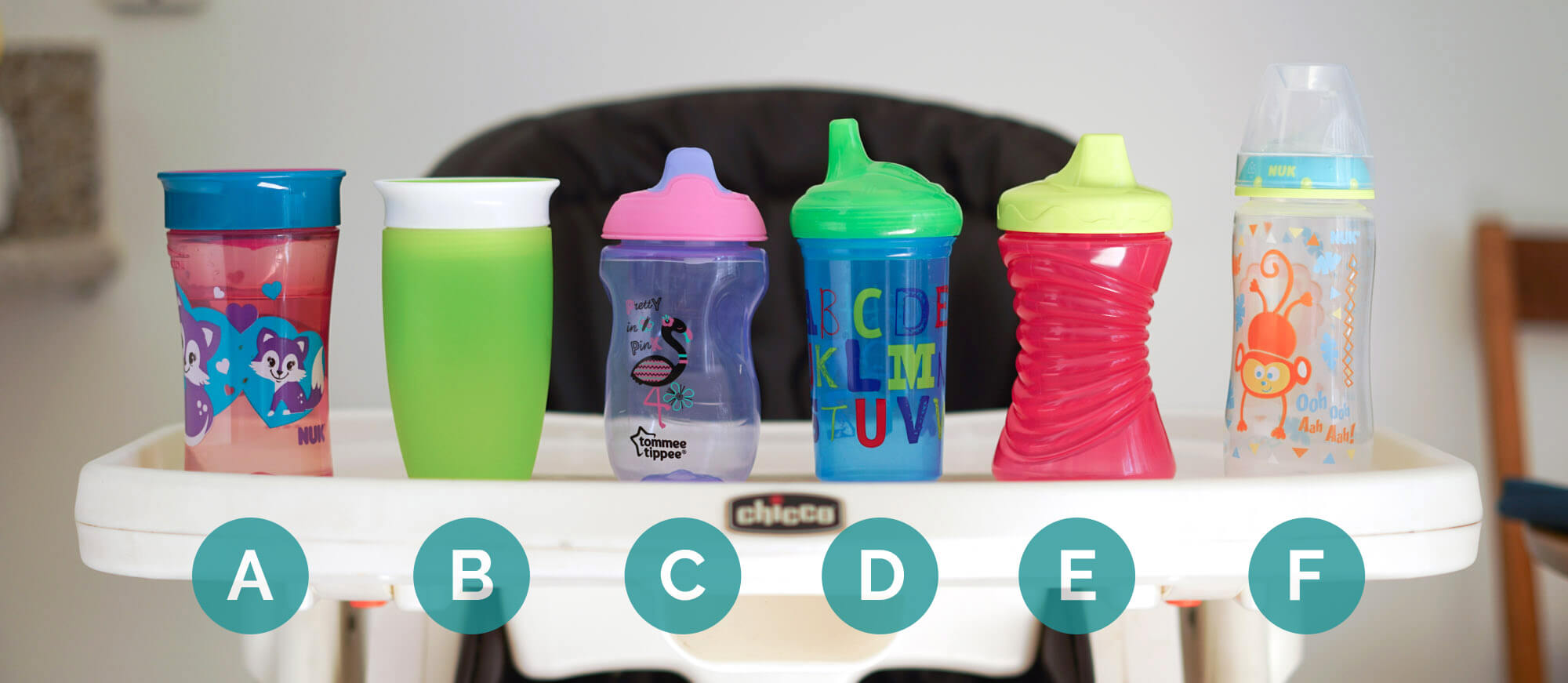 The Best Sippy Cups Of 2021 Reviews By Your Best Digs
The Best Sippy Cups Of 2021 Reviews By Your Best Digs
Munchkin Miracle 360 Trainer Cup Best Sippy Cup for 6-Month-Olds.
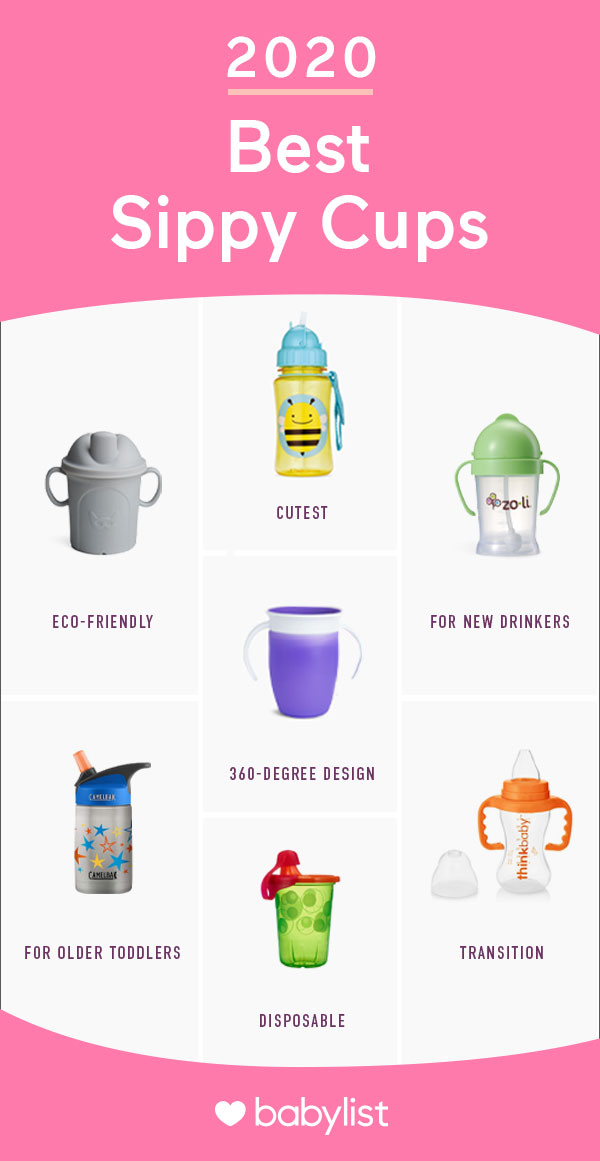
Best transition cup from bottle. Best Sippy Cup to Transition From Bottle. Sassy Grow Up Cup with handles. Yet another milestone in your babys life is the transition from breast or bottle to cup.
This non-spill baby cup has a unique feature to help with the bottle-to-cup transition. The anti-slip handles are just the right size for tiny hands and easy for your child to hold onto. Babies cant quite handle the responsibility of carrying around a regular cup so youd be cleaning up spills and changing their outfits all day.
Browns Options Wide-Neck Sippy Spout Baby Bottle with Silicone Handle Pink 9 Ounce 47 out of 5 stars 8415. The Tiny Cup is made to help a baby smoothly transition from a bottle to cup. Coming of age for cup drinking correlates with lots of other life events for children such as eating at the table joining preschool and so on.
Thermos FOOGO soft spout stainless steel. In fact she recommends it. Its the only one of its kind to light up.
Whether youre right on time or a bit behind schedule it happens well walk you through how to transition from a bottle to a sippy cup and never look back. Tommee Tippee Soft Transition Cup. Parents will love the wide weighted base that adds stability and reduces the chance of spills.
However there is a clear reference allowed in this article to move throughthat includes some baby-friendly sippy cups in discussion. Featuring both a nipple and a soft silicone spout this sippy cup will help your little one seamlessly. Philips Avent My Bendy Straw.
Its also loved by parents of babies who just wont take a bottle. Browns 2-in-1 Transition. The brand is known for producing intuitive baby products and their Soft Spout Sippy Cup makes it easier for kids to transition from the bottle.
NuSpin Zoomi Straw. Munchkin Latch Transition Cup For the baby who insists on holding his bottle on his own the Munchkin Latch can make the transition to a cup a little less frustrating. The description of this cup says open cup drinking supports healthy oral and speech development aids with teething helps baby learn to have a strong swallow and can decrease tooth decay This cup is meant to be used with parent assistance.
Transitioning from Bottle to Cup Drinking While bottles are the safest method for infants eventually children must make the transition to cup drinking. Thats where sippy cups come in handy they cut down on spills and your frustration levels. The almond-shaped spout conforms to a childs.
A slow and methodical process using the Dr. Thinkbaby No Spill. Having trouble with the switch from bottle to cup.
Philips Avent My Natural Trainer Cup Best Sippy Cup for Beginners. The spout of this 4-ounce cup is super pliant and allows your baby to latch while drinking. Tommee Tippee cups come with soft bottle nipples made from silicone.
Buy Buy Baby 699. Made of soft silicone it wont damage the babys teeth or gums. Philips Avent Classic Trainer Cup.
Pura Kiki Stainless Steel. The soothing automatic glow makes it easy for little ones or their parents to find in the dark. Easily transition babies 9 months and up from bottle to cup with the Olababy open training cup.
The NUK Learner Cup is a fairly standard sippy cup for making the transition from the bottle but there are a few important reasons why parents prefer it among others. A lot of families offer water in a sippy cup right away and that can make the transition tougher she says. Browns Soft Spout Transition Cups.
Add to Babylist Buy Now. Weaning baby from the bottle and developing new sipping skills for the eventual transition might seem overwhelming but it doesnt have to be. The best cups and beakers for babies and toddlers.
Best Transition Sippy Cup. The American Academy of Pediatrics AAP suggests fully transitioning from bottles to cups by the time a. Philips Avent My Easy.
Amazons Choice for Bottle Transition Cup Best Dr. These transition cups are simply amazing. The reviewed cups are the best sippy cup for teeth.
These are the best sippy and transition cups ranked in order. NUK Simply Natural Learner Cup. The soft spout enables your baby to drink in several different ways.
Sippy cups are used to transition your baby from the bottle to a real cup. Weaning baby from the bottle is a big step and most pediatricians advise starting between 12 and 18 months. With a wide range of sippy straw and transitions cups youll have no problem finding the sippy cup your baby loves best.
When you make sure that you are going to transit your sweetheart from bottle to sippy cup things do not go well without knowledge a bit about the issue. They are spill-proof cup gentle on your infants gums and you can safely clean them in the dishwasher. OXO Tot Transitions.
Your baby will feed around 6 times a day. Keep the teat full.
Always give your baby plenty of time to feed.
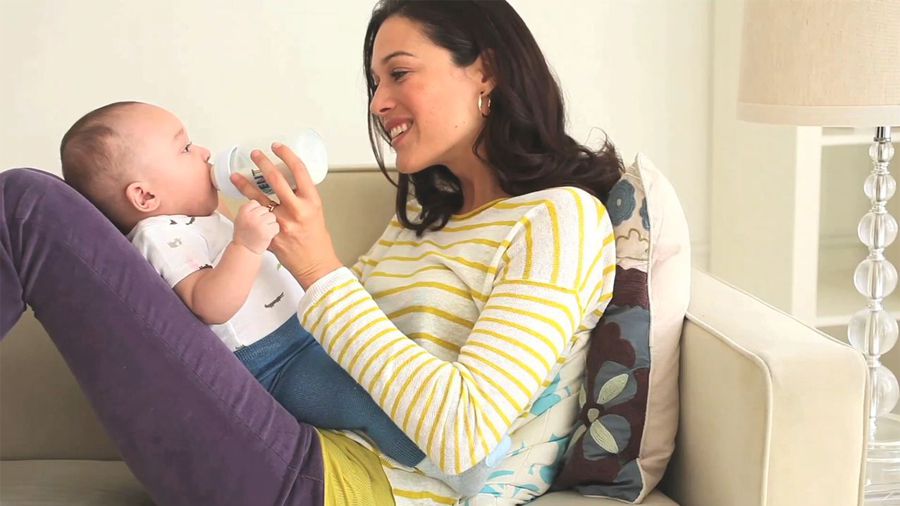
How to feed newborn with bottle. If you dont know the tips then you have to face some problems. Hold your baby fairly upright for bottle feeds. If you are the parents of a newborn baby you have to know the tips how to feed bottle feeding of a newborn baby.
As your baby gets older he or she may take in more milk in less time at each feeding. When your baby stops suckling closes his or her mouth or turns away from the nipple or bottle he or she might be full or simply taking a break. In this bottle-feeding position babys head rests in the crook of your arm as you hold her head and chest at a slight inclineclose to your chest is great.
The bottle and formula can both be purchased at most large pet supply stores or online. Then hold your baby in a semi-upright position while supporting their head. Even though breastfeeding has many benefits the most important thing is for your baby to be healthy well fed and hydrated.
Per feeding every 3-5 hours. How Much Formula to Feed Baby At birth a newborn make take an ounce or two of formula at a time. Its better for your baby to be on a slight incline so any air bubbles rise to the top making burping easier.
For a start youll need to learn how to sterilise the equipment and make up a bottleYoull also need to know how to give your baby her bottle and how often and how to cope when youre out and about. Hold the bottle at a horizontal angle so that your little one has to gently suck to get the milk. Try these bottle-feeding positions instead.
This means that you will need access to a pan and a stove to heat water on. You will also need to be able to sterilize the bottle. Our beginners guide to bottle-feeding will help to get you started.
Babies shouldnt be flat on their backs when they are being fed to avoid the risk of choking. If you choose to or need to stop breastfeeding need to supplement your breast milk supply or if your milk hasnt come in formula can fulfill your babys nutritional requirementsHere are some of the benefits of bottle feeding your baby. Per feeding every 2-3 hours.
Some baby feeding tips are given below. Feedings take place 6 to 8 times in 24 hours. Best Positions for Bottle Feeding To feed your baby cradle her in a semi-upright position and support her head.
They should be fairly upright with their head supported so they can breathe and swallow comfortably. Dont feed her lying downformula can flow into the middle ear causing an. Next place the nipple on their lower lip to get them to open their mouth and tilt the bottle upwards as they suck.
Be sure that the milk fills the entire nipple so that your baby isnt gulping lots of air which. To bottle feed your newborn baby start by sterilizing the bottle and nipple in boiling water for 5 minutes before filling the bottle with milk or formula. Hold your baby close to you.
Brush the teat against your babys lips and when your they open their mouth wide let them draw in the teat. Your baby will feed 7 to 9 times per 24 hours. Once you have your bottle ready find somewhere comfy to sit and feed your baby.
Tongue tie and lip tie can prevent the baby from taking enough breast tissue into the mouth to latch properly for. As the days go on the ounces increase to about 2-3 oz. To feed a newborn puppy you will need a bottle made specially for feeding newborn puppies and milk replacement formula.
As bottle feeding is an important matter for a newborn baby. Try burping your baby or waiting a minute before offering your breast or the bottle again. At one month most babies will consume about 4-6 oz.
Support their head so they can breathe and swallow comfortably. Cradle baby in your arms. Put the teat against your babys lips.
Paced bottle feeding is a technique that allows your baby to drink more slowly and take breaks helping to prevent overfeeding and choking. Giving baby the bottle Make yourself comfortable and cuddle your baby close to you holding baby gently but firmly. This video will s.
When bottle feeding keep the teat full of milk otherwise your baby will take in air. They lift their lower jaw during suckling and use their top gum and the tip of the tongue which lies on the lower gum to keep the nipple bottle in place. This is the classic position you probably think of when you imagine giving baby a bottle.
1 to 3 months. Difficulty latching and feeding when babies breastfeed or bottle feed. So you should be more serious about the feeding of your newborn baby.
If youre planning to formula-feed your baby youll have plenty to think about.
Feeding an infant cereal could be harmful to their health. The American Academy of Pediatrics AAP discourages adding rice cereal in the bottle unless directed by a pediatrician 1.
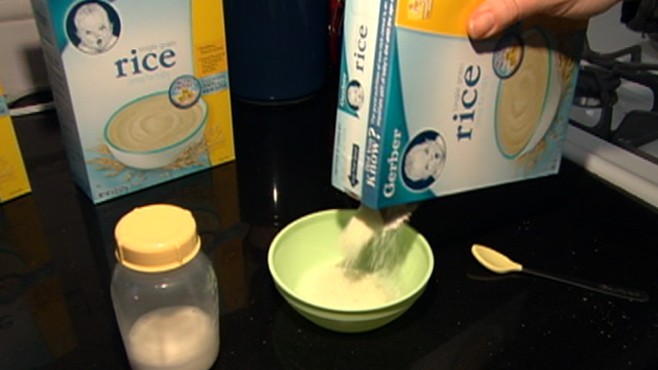 Rice Cereal Controversy Does It Make Kids Fat Abc News
Rice Cereal Controversy Does It Make Kids Fat Abc News
Experts believe that rice cereal in the bottle is a potential choking hazard especially for young infants whose oral motor skills are underdeveloped.

Rice cereal in bottle. Unless theres a medical reason for giving it early its not worth jumping the gun. The American Academy of Pediatrics AAP discourages adding rice cereal in the bottle unless directed by a pediatrician 1. A three month old child does not have a mature digestive system yet so they will not be able to process solid foods.
Health Issues of Adding Rice Cereal in Bottle of Your Infant. You may wonder if you can safely add rice cereal to your babys bottle. Pick a time when your baby is calm and not too hungry or full.
Its the first convertible bottle in the market. I have a 2 and a half month old. Of formula or expressed breast milk.
Offering cereal in a bottle or even on a spoon before babies are developmentally ready can increase the likelihood of gagging andor inhaling the thickened mixture into their lungs. Experts believe that rice cereal in the bottle is a potential choking hazard especially for young infants whose oral motor skills are underdeveloped. The American Academy of Pediatrics AAP discourages adding rice cereal in the bottle unless directed by a pediatrician 1.
6 teaspoons of formula. Most pediatricians recommend that when you feed your infant cereal with her formula then do mix cereal and formula together in a bowl and feed your baby with a spoon to avoid the possibility of choking. Prepare the bottle right before you plan to feed your baby.
Why is it such a big deal for people to put a little cereal in their babies bottleMy 6 week old son was drinking 5 ounces of formula every 1 12 to 2 hours and screaming and crying all day and would only sleep 2 hours a day. Add rice cereal to the bottle. Putting infant cereal in your babys bottle will not make him or her sleep longer and could increase your babys risk of choking.
Due to the thick consistency of rice cereal as compared to milk introducing it in the bottle may pose threat of choking to your little one. A trial of thickening feeds for infants with severe reflux or. The mixture will continue to thicken if you let it sit.
Add the rice cereal to the bottle. The specific amount to add depends on your situation. For example the National Diseases Information Clearinghouse website recommends 1 tbsp.
Segura says adding rice cereal to a bottle should only be used when medically indicated for gastroesophageal reflux disease GERD. The American Academy of Pediatrics AAP discourages adding rice cereal in the bottle unless directed by a pediatrician 1. The American Academy of Pediatrics AAP discourages adding rice cereal in the bottle unless directed by a pediatrician 1.
Start by offering your baby small amounts of breast milk or infant formula in the bottle. Of formula or expressed breast milk while the American Academy of Family Physicians recommends 2 to 3 tbsp. You can nurse or bottle feed first and then end feedings with rice cereal.
Listed below are potential hazards if you add rice cereal in your babys formula. Rice Cereal has a thicker consistency in comparison to milk so rice cereal in a bottle may cause a choking hazard in babies. This can cause an upset stomach.
You can use it with or without the vent system and its perfect for rice cereal. Formula wasnt doing enough for him so yester day I started adding 2 tsp of rice cereal to his morning and night bottle and the little guy is much happier. Can I try this with her yet or no.
That is help him sleep for longer hours. Doctors used to recommend rice cereal as a first food But now we know that age-appropriate foods can be introduced in. For every 1 oz.
Of rice cereal for every 2 oz. Experts believe that rice cereal in the bottle is a potential choking hazard especially for young infants whose oral motor skills are underdeveloped. I was wondering what age people started doing this.
Though many people swear by this practice there is no proof available. Browns bottle available in 5 ounces and 9 ounces features an easy ergonomic wide-neck easy to fill and hold design. Alternatives that You Can Use instead of Rice Cereal Owing to the health hazards caused by adding rice cereal in your babys diet at an early age you must try alternative methods to get the desired result.
Experts believe that rice cereal in the bottle is a potential choking hazard especially for young infants whose oral motor skills are underdeveloped. This wide-neck glass bottle gets a thumbs-up from parents and babies alike. Experts believe that rice cereal in the bottle is a potential choking hazard especially for young infants whose oral motor skills are underdeveloped.
I have heard of people putting a little bit of rice cereal in their babies bottle at night to get them to sleep longer. The answer may not be that simple because sometimes doctors may recommend adding rice cereal to the babys bottle due to various reasons and some may not recommend doing so. Start by adding 1 teaspoon of rice cereal per ounce ie.
The idea is to slowly swap out bottles in favor of cups. Going from a bottle to a cup doesnt mean that you need to stop giving your child breast milk or formula Fisher saysyou can give them both in a sippy cup or cup with a straw.
 13 Best Sippy Cups Of 2020 By Age Healthline Parenthood
13 Best Sippy Cups Of 2020 By Age Healthline Parenthood
A lot of families offer water in a sippy cup right away and that can make the transition tougher she says.

Weaning from bottle to sippy cup. Spill-proof cups that have spouts designed just for babies sippy cups can help ease the move from the bottle. In fact she recommends it. Usually during lunchtime they wouldnt care much about their bottle.
When your child does use the cup offer plenty of praise. Replace one feed a day with the sippy cup. Offer them sippy cup with little milk in it and encourage them to drink it.
Sometimes it takes trial and error to get results. Start thinking about the transition around 9 months. Test to see if your baby is ready for a sippy cup.
Actively encourage them to say goodbye to their bottle. For example you might fill in a cup for the bottle at just one feeding a day then add a second cup the following week. Housavvy Stainless Steel Sippy Cup with Lid and Straw 12 months old The First Years Take Toss Spill-Proof Sippy Cups 18 months old Transitioning from a bottle to a cup is always easier than we anticipate.
How to Transition from Bottle to Sippy Cup. Dentists recommend sippy cups with a hard spout or a straw rather than ones with soft spouts. Use a sippy cup with easy-to-hold handles and a soft nipple-shaped spout like the Transitions Soft Spout Sippy Cup.
While its not a bottle it can teach your child that milk is available just not in a bottle and not in the typical waterjuice sippy cup. Sippy cups can be used as a transition between bottles and open cupsand they can minimize spills unless your toddler unscrews the top. Your babys got this.
At this age sippies are not meant to replace a bottle feedespecially since your child is unlikely to actually drink much out of it early on says Dr. So start introducing sippy cup at lunchtime. How to Wean Your Toddler Off a Bottle.
BYE-BYE BOTTLE a bitter-sweet goodbye. This gradual approach works for most babies. If you use a rimmed cup for example try a straw cup.
NUK Sippies 7. Plus your child could be at risk for baby bottle tooth decay and obesity. Either store or throw out all the bottles and transition to a sippy cup in one day or slowly wean the child over a period of days by replacing a bottle feed with a sippy cup feed every day or so until all the feeds are had out of a sippy cup.
Try a Separate Cup. To increase your chance of transitioning without tears try the following. Having three children myself I know the constant.
Here at Reviewed many of us are parents so we know that even the small everyday items for your tot are extremely importantThats why when its time for your baby to transition from bottles the American Academy of Pediatrics recommends weaning before 18 months finding the best sippy cup that doesnt result in spills is very important. Try a cup thats completely different from the waterjuice sippy cup. When you are trying something new with kids it always a good idea to make a change at the happier time of the day.
There are many features to consider when choosing the best. Weaning a baby from a bottle to a sippy cup is not an easy task and is extremely unique and independent for a toddler. Remember that your baby is like no other and there should be no pressure on them when it comes to making the next step.
Introduce your child to a sippy cup with solid foods. Fill it with a small amount of water or milk and serve it with solid food meals. Here are 14 of our favorite sippy cups for ages 4 to 6 6 to 12 12 to 18 and 18 months plus tips for how to introduce a new cup.
You might have better luck initially with a soft spout that will feel more like a bottle nipple than a hard. Sippy cups can cause cavities ear infections and too much weight gain. Lets say it together.
Our comprehensive Sippy Cup Smackdown covers all your sippy cup options but there are a few noteworthy standouts when it comes to weaning off the bottle. Introduce them to the sippy cup. Hi we are going to start weaning our almost 12 month old daughter off of formula she has been drinking water from a 360 cup for about 3 months now she doesnt do well with straw cups or sippy cups she just chews the silicone spout.
1Introduce a Sippy Cup at Daytime. Best Sippy Cups for Weaning off the Bottle. Sippy cups can also make it harder for kids to learn how to drink from an open cup.
Once your little one has got used to this cup you should switch to a cup which is halfway between a sippy and a bottle then finally you can switch to a. If your child drinks from a sippy cup only put water in the cup. Milk and juice in a sippy cup can cause cavities.
Continuously tell them they are growing up when using the sippy cup. When you start using a sippy cup use it for all liquids including milk right away and then switch to an open cup such as a 2-handled cup as soon as your child can manage it usually before age 2. This involves changing a single aspect of a sippy cup at each stage of weaning off of bottles.
The longer you wait to wean your child off the bottle or sippy cup the harder itll be he says. Baby The first step is to begin by using a cup that is similar to your childs regular bottle. A natural progression from the bottle is a sippy cup used as a gradual transition towards normal cups.
Occasionally during their feeding tip the spout of the cup to their mouth so they learn what its for.
Before you bottle-feed your baby its important to know how to clean and sterilise bottle-feeding equipment as well as how to prepare store and warm. Never prop up a formula bottle rather than holding it in your own hand.
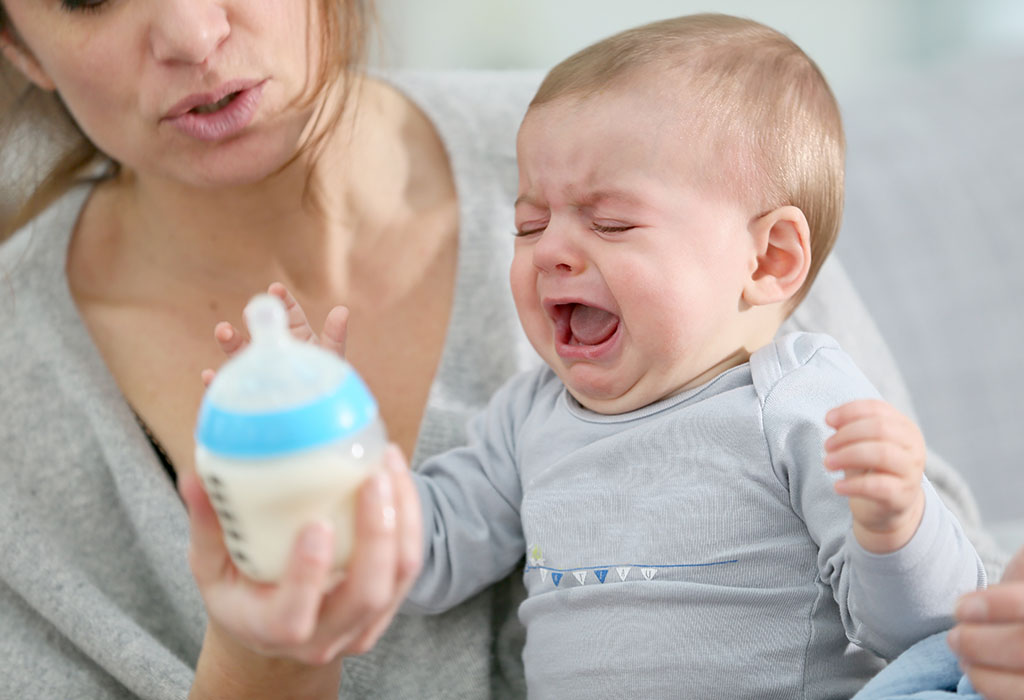 10 Common Bottle Feeding Problems And Solutions
10 Common Bottle Feeding Problems And Solutions
Proper Feeding of Orphans.
Proper bottle feeding position. One of the more traditional bottle-feeding positions cradle hold feeding consists of placing babys head in the crook of your arm and wrapping your hand around his bum. Bloating or aspiration of food. Dont feed her lying downformula can flow into the middle ear causing an infection.
Instead of lying down baby should be almost in a seated position with his head on your chest or in the crook of your arm. Youll need to tip it higher as the bottle slowly drains. If any of these occur examine the following aspects of your feeding methods.
You can try different ones to find out what works best for you. Breastfeeding is a skill that you and your baby learn together and it can take time to get used to. Cup your breast with your other hand placing your thumb above your nipple and areola at the spot where your babys nose will touch your breast.
How to do it. Always keep your babys head higher than the rest of the body during feeding. As with breastfeeding there are certain positions that will suit your baby better when they move on to bottle feeding.
In this bottle-feeding position babys head rests in the crook of your arm as you hold her head and chest at a slight inclineclose to your chest is great. Then lift your elbow so that baby is at a slight angle with their head higher than their body. This classic breastfeeding position requires you to cradle your babys head in the crook of your arm.
Your bottle-feeding position should mimic as closely as possible your breast-feeding position. Place your baby in a feeding position. If your baby cant always feed directly from your breast you might choose to bottle-feed with expressed breastmilkOr you might need to feed your baby infant formula which is the only safe alternative to breastmilk.
Cradle her in a semi-upright position and support her head. You can keep your baby in a breastfeeding position. Holding the baby and the bottle.
Sit in a chair with supportive armrests or on a bed with lots of pillows. Spoon-feeding baby solid foods usually begins at around 6 months old. If youre one of the estimated three quarters of American moms who has breastfed a baby you probably already know that transitioning to bottle feeding or.
Feeding position is an important matter for a newborn baby when they will be fed. Always tilt the bottle so the nipple is full of milk. Position the bottle at an angle rather than straight up and down so the milk only comes out when your baby sucks.
When it comes to feeding air in milk usually sends shivers up the spine of most parents and can lead to that most dreaded subject of colic. You can stand up and even walk around while feeding your baby in the crook of your arm. The effect of sucking habits cohort sex intercanine arch widths and breast or bottle feeding on posterior cross bite in Norwegian and Swedish 3-year-old children Am J Orthod Dentofac Orthop 1994106161-6.
Some people prefer tube-feeding because it is less time-consuming than bottle-feeding especially if a whole litter has to be fed. The puppy should not overextend its head during feeding. Its worth getting comfortable before a feed.
Position your baby so his head rests in the bend of your elbow of the arm on the side youll be breastfeeding with the hand on that side supporting the rest of the body. You also can keep your baby on your lap. Dont feed her lying down -- formula can flow into the middle ear causing an infection.
Here are three popular bottlefeeding positions to keep in your feeding toolkit. Place your baby in the crook of one arm. Work with your pediatrician to introduce new foods and discuss issues like spitting up or refusing foods.
Rest your feet on a stool or another raised surface to avoid leaning forward toward your baby. A quick tip for bottle feeding is to make sure the bottle isnt held too flat. Watch your baby for cues that he or she is full and then stop even if the bottle is not empty.
If necessary put a pillow on your lap to raise your baby up. Give your baby only breast milk or infant formula in a bottle. How to bottle feed.
Whether your breastfeed or bottle feed your baby making sure he or she gets the right amount of calories and proper nutrition is essential to proper development. So they dont want to eat more. Hold your baby close to you on your lap in a semi-upright position so you can make eye contact.
You just need to check the following points. Best Positions for Bottle Feeding To feed your baby cradle her in a semi-upright position and support her head. Let your baby take breaks from drinking when he or she seems to want them.
Lower position Ogaard B Larsson E Lindsten R. Hold your baby close when you feed him or her a bottle. Hold baby upright.
Support their head with your arm tilting their body. Warm the milk or water properly. If your baby doesnt remain correct position he or she will feel uncomfortable to eat.
The cradle hold is a crowd pleaser that many parents like to use because of the laid-back position for both parent and baby. There are lots of different positions you can use to breastfeed.
/ArielSkelley-12022cfbaf0346b1b1588777f6f6a5a2.jpg)